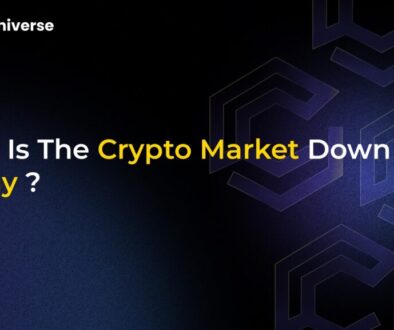Debate Among Bitcoin Core Developers: Navigating Bitcoin’s Future

Debate Among Bitcoin Core Developers: Navigating Bitcoin’s Future
A recent joint statement by 31 Bitcoin Core developers has ignited a fervent global discussion within the Bitcoin community, challenging long-held assumptions about the network’s fundamental purpose and its future evolution. This declaration, advocating for a hands-off approach to how the Bitcoin network is utilized, explicitly acknowledges its potential for a myriad of non-monetary applications. The developers emphasized a crucial tenet: Bitcoin is a user-defined network, and they are not in a position to dictate software or policies. This stance comes amidst heated debates on phenomena like “spam inscriptions” and the implications of removing certain transaction data limits, prompting a wide range of reactions from support to sharp criticism.
The Core Developers’ Stance: Bitcoin as a User-Defined Network
The pivotal statement from Bitcoin Core developers underscores a foundational philosophy: Bitcoin is a network defined by its users. This implies that the ultimate control and definition of the network’s usage reside with its participants, rather than with a centralized authority or even the core development team itself. The developers unequivocally stated their inability to dictate software or policies, reinforcing user autonomy as a cornerstone of Bitcoin’s decentralized design.
This declaration emerged directly from ongoing discussions surrounding controversial network activities, particularly the use of “spam inscriptions” and the OP_Return function. OP_Return allows users to embed small amounts of arbitrary data within transactions. While initially designed for simple metadata, its application has expanded, leading to debates about its impact on network efficiency and the blockchain’s integrity. By adopting a hands-off stance, the developers implicitly recognize Bitcoin’s robust potential for diverse use cases, even those that might not be universally accepted by all Bitcoiners. This approach is deeply rooted in the commitment to maintaining a censorship-resistant system, ensuring that no single entity can dictate what constitutes ‘valid’ or ‘acceptable’ use of the network. However, this neutrality has not been without its critics, who argue it might inadvertently enable practices that could lead to network congestion and potentially dilute Bitcoin’s primary function.
Divided Community: Reactions and Differing Perspectives
The developers’ statement has sharply divided the Bitcoin community, highlighting fundamental disagreements on the network’s intended purpose and governance. This ongoing discourse reveals a spectrum of viewpoints:
Arguments for the Hands-Off Approach:
- Censorship Resistance: Supporters argue that a hands-off approach is vital for preserving Bitcoin’s inherent censorship resistance. Dictating acceptable use cases could set a dangerous precedent, potentially allowing a centralized authority to exert control over the network.
- User Autonomy: This stance upholds the core principle of Bitcoin as a user-defined network, empowering individual users to decide how they wish to utilize the blockchain.
- Innovation: A neutral stance fosters an environment where unforeseen innovations and diverse applications can emerge on the network, promoting organic growth and adaptability.
Concerns and Criticisms:
- Spam Inscriptions and Network Congestion: A primary concern among critics is the proliferation of “spam inscriptions” – non-monetary data embedded on the blockchain – which they fear could lead to increased network congestion and higher transaction fees for everyone.
- Deviation from Core Function: Many argue that Bitcoin’s primary purpose is to serve as a peer-to-peer electronic cash system. Allowing extensive non-monetary data storage, they contend, could dilute this core function and make the network less efficient for financial transactions.
- Transaction Relay Policy: Prominent developer Luke Dashjr has openly criticized the developers’ stance, particularly regarding its implications for transaction relay goals, arguing that it could enable undesirable data to propagate across the network.
Key Voices in the Debate:
- Samson Mow (JAN3 CEO): Criticized the statement, expressing concerns that it enables “spam” and could lead to detrimental network effects, diverting resources from Bitcoin’s monetary use case.
- Jameson Lopp (Casa Founder): Defended the developers’ position, emphasizing the importance of network health and a balanced relay policy that avoids dictating acceptable content, allowing for flexibility while maintaining stability.
- Carl Horton (Bitcoiner): Stressed Bitcoin’s fundamental role as a peer-to-peer electronic cash system, implying that non-monetary uses detract from this essential purpose.
The debate underscores the complex challenge of balancing user freedom and innovation with the critical need to maintain network efficiency and align with Bitcoin’s foundational principles.
Unpacking the Technical Underpinnings of the Discussion
At the core of this technical debate lies the delicate balance of transaction relay policies, the functionality of OP_Return data, and the broader impact of inscriptions on Bitcoin’s Unspent Transaction Output (UTXO) set. These technical elements are central to understanding the varying perspectives.
Understanding OP_Return:
OP_Return is a specific opcode within Bitcoin’s scripting language designed to allow users to embed a small amount of arbitrary data (typically up to 80 bytes) into a transaction output. Its key characteristic is that outputs containing OP_Return are provably unspendable, meaning they cannot be used as inputs for future transactions. This design choice is crucial because it allows Bitcoin nodes to ‘prune’ or discard these outputs, preventing them from bloating the UTXO set – the collection of all currently spendable outputs on the blockchain. This mechanism was intended to provide a controlled way for developers and users to store metadata without negatively impacting the network’s long-term health.
Inscriptions and Their Impact:
While OP_Return was designed for limited data storage, the emergence of “inscriptions” (such as Ordinals) has introduced a new dimension to this debate. Inscriptions often leverage different aspects of Bitcoin transactions, typically by embedding data within the witness data of SegWit transactions. This data is not subject to the same pruning rules as OP_Return, potentially allowing for larger amounts of data to be stored on the blockchain. This has led to significant concerns about:
- Network Congestion: Increased demand for block space due to large data inscriptions can lead to higher transaction fees and slower confirmation times for all users, impacting the network’s utility as a quick and affordable payment system.
- UTXO Set Bloat: Although OP_Return outputs are pruned, the data embedded by inscriptions can contribute to the overall size of the blockchain data that full nodes must store and validate. This raises concerns about potential impacts on decentralization and the operational costs for running a full node over time.
- Resource Utilization: Non-monetary data consumes valuable block space, which many argue should be primarily reserved for financial transactions, given Bitcoin’s intentionally limited block capacity.
Proposals for Mitigation:
Various proposals have emerged to address these concerns and mitigate the perceived ‘spam’ or inefficient use of blockchain resources. These often revolve around:
- Limiting Non-Monetary Blockchain Use: Suggestions include adjusting transaction relay policies to disincentivize or outright prevent certain types of non-monetary data from easily propagating across the network.
- Adjusting Fee Mechanisms: Exploring ways to make the cost of embedding large amounts of data prohibitively expensive, ensuring that block space is primarily used by those willing to pay the market rate for its most valuable use.
- Technical Tweaks to Node Software: Modifying how nodes validate and relay transactions to filter out or deprioritize certain data types. However, this approach is highly contentious as it brings the network closer to a form of censorship.
The technical discussions aim to find a delicate balance where Bitcoin remains open and permissionless, while also maintaining its efficiency, security, and long-term viability as a robust monetary network.
Conclusion: The Evolving Identity of Bitcoin
The ongoing debate among Bitcoin Core developers and the wider community is more than just a technical disagreement; it’s a profound discussion about the very identity and future trajectory of Bitcoin. While the developers emphasize user autonomy and a hands-off approach, acknowledging Bitcoin’s potential for diverse applications, strong voices within the community advocate for a strict adherence to its core function as a peer-to-peer electronic cash system. The technical implications of inscriptions and OP_Return data on network congestion and efficiency remain central to these discussions.
Ultimately, this debate reflects the inherent tension in a decentralized system: how to foster innovation and user freedom while preserving the network’s health, security, and original purpose. The resolution, or continued evolution, of this discussion will undoubtedly shape Bitcoin’s path forward, influencing how it is used, perceived, and developed in the years to come.


